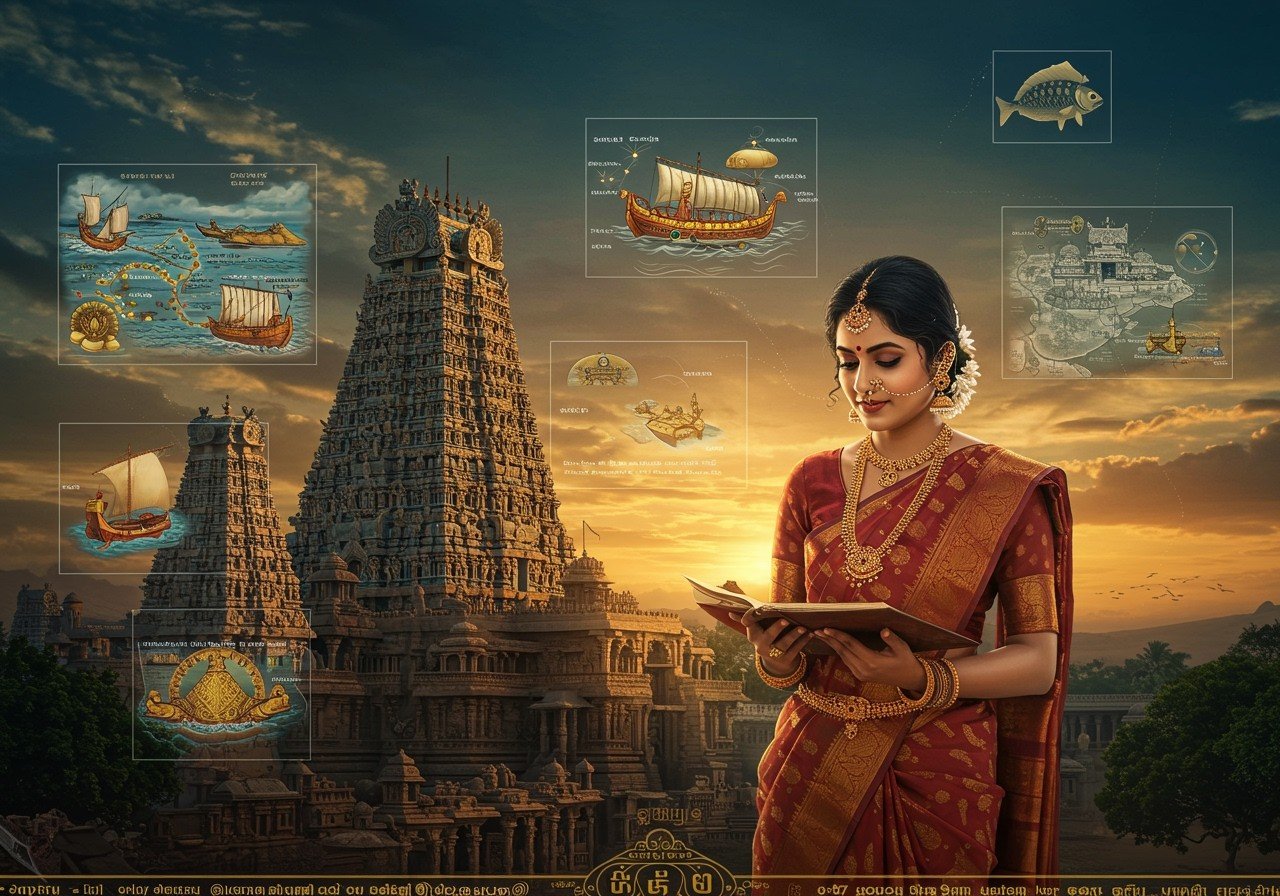
The Pandya Dynasty, a prominent ancient Tamil dynasty, boasts a rich history spanning over two millennia, from the 4th-3rd centuries BCE to the 14th century CE. Known for their significant contributions to Tamil culture, literature, and architecture, the Pandyas have left an indelible mark on South Indian history. This article explores the enduring legacy of the Pandya Dynasty and its influence on modern India. We will examine the relevance of the Pandya lineage in contemporary society, their cultural and architectural contributions, and how their legacy continues to shape the present.
The Historical Significance of the Pandya Dynasty
The Pandyas, one of the four great kingdoms of Tamilakam (alongside the Pallavas, Cholas, and Cheras), ruled parts of Southern India, primarily Tamil Nadu, from as early as the 4th-3rd centuries BCE. Their kingdom thrived due to prosperous trade relations with the Roman Empire and Southeast Asia. The Pandyas were great patrons of Tamil literature, especially Sangam literature, which flourished under their rule. Their capital, Madurai, became a cultural hub, renowned for the Meenakshi Amman Temple, a marvel of Dravidian architecture. Known for their administrative skills and military prowess, the Pandya kings maintained their dominance for centuries, experiencing two periods of imperial dominance between the 6th and 10th centuries CE. These contributions laid a strong foundation for the socio-cultural development of South India.
Cultural and Architectural Contributions
The Pandya Dynasty’s influence is most evident in Tamil culture and architecture. The Meenakshi Amman Temple in Madurai stands as a testament to their architectural genius, showcasing intricate sculptures and towering gopurams (gateway towers). The Pandyas were instrumental in promoting Tamil literature, with the Sangam period producing some of the finest Tamil poetry and prose. Their patronage extended to music and dance, particularly Bharatanatyam, which flourished during their reign. Traditional Tamil festivals like Pongal and Chithirai Thiruvizha, originating during the Pandya era, continue to be celebrated with great fervor today. The dynasty’s support for temple construction and renovation helped preserve and propagate Hindu religious practices. The Pandyas’ emphasis on education and scholarship established institutions that became centers of learning and culture.
Descendants and the Pandya Dynasty Today
The legacy of the Pandya Dynasty is carried forward by their descendants, who actively preserve Tamil culture and traditions. Some descendants are involved in cultural and social activities, promoting the rich heritage of the Pandyas. Efforts are underway to trace the lineage and genealogy of the Pandya family, with some descendants still residing in Tamil Nadu. Modern-day Madurai, once the Pandya capital, remains a vibrant city, celebrating its historical roots through festivals and cultural events. The influence of the Pandyas is visible in the local customs, traditions, and everyday life of the people in the region. Ongoing efforts focus on preserving and restoring Pandya-era temples and monuments, ensuring their legacy endures for future generations.
The Pandya Dynasty’s Enduring Legacy: Religious Practices
The Pandya Dynasty’s deep-rooted religious practices, primarily centered around Hinduism, significantly shaped the spiritual landscape of the region. Their patronage led to the construction of magnificent temples, many dedicated to Lord Shiva, which continue to be vital centers of worship. These temples not only served as places of worship but also fostered a sense of community and cultural identity. The rituals and ceremonies performed within these sacred spaces played a crucial role in the daily lives of the people, reinforcing their faith and traditions.
Poojn.in, India’s leading online store for cultural and religious goods, offers a wide selection of products that connect to these historical practices. You can find items like:
- Traditional brass lamps and diyas: reminiscent of those used in ancient Pandyan temples, perfect for creating a sacred atmosphere at home.
- High-quality incense sticks and dhoops: enhance the spiritual experience with fragrances traditionally used in Pandyan temple rituals.
- Statues and idols of deities worshipped during the Pandya era: bring the divine presence into your home with beautifully crafted murtis.
By offering these products, Poojn.in helps individuals connect with their heritage and continue the traditions established centuries ago by the Pandya Dynasty.
Conclusion
The Pandya Dynasty’s legacy stands as a testament to their enduring impact on modern India. From their invaluable contributions to Tamil literature, art, and architecture to their significant influence on trade and culture, the Pandyas shaped the cultural landscape of Tamil Nadu and beyond. Their support for education, the arts, and religious practices helped define the region’s identity. Today, the Pandya Dynasty’s influence can be seen in the vibrant traditions, festivals, and daily life of the people. By honoring and preserving this rich heritage, the Pandya legacy remains a source of pride and inspiration for future generations.


